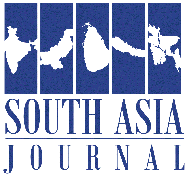
Chinese President Xi Jinping shakes hands with then-Nepalese President Bidya Devi Bhandari as he wraps up his two-day visit to Nepal, in Kathmandu on Oct. 13, 2019. © Reuters
Bhandari, a former vice chair of the ruling Communist Party of Nepal (Unified Marxist-Leninist), or CPN-UML, was one of four keynote speakers at the Dialogue with Political Parties from Neighboring Countries in Beijing. Organized by the Chinese Communist Party’s International Department (IDCPC), the high-profile forum drew 200 delegates from political parties, businesses and think tanks across 29 Asia-Pacific countries.
She later traveled to Dunhuang in Gansu province to attend the Fourth Dialogue on Civilizational Exchanges under the Global Civilization Initiative (GCI). In her speech, Bhandari praised China’s development model and the CPC’s governance as a guide for countries like Nepal. She endorsed Beijing’s vision of a shared future as a blueprint for Asian cooperation and modernization, according to the IDCPC website.
Her itinerary made it clear she was no ordinary guest. She was hosted at the Diaoyutai State Guesthouse, typically reserved for heads of state. She held meetings with Chinese Vice President Han Zheng and Liu Jianchao, head of the IDCPC. Liu is considered among the potential foreign ministerial candidates to succeed Wang Yi.
“Although she has now stepped down from office, her influence as a national leader in Nepal remains significant, and she continues to serve as an important symbol of China-Nepal friendship,” said Gao Liang, deputy director of the Nepal Study Centre at Sichuan University’s Institute of South Asian Studies.
In Nepal, while the prime minister heads the national government, the president holds only an honorary position. She completed a full five-year presidential term two years ago and is currently a party member of the CPN-UML, having no office within the party.
But China sees Bhandari as a major political figure in Nepal, according to Rupak Sapkota, a former deputy director of the Institute of Foreign Affairs, a state-run think tank. He also served as foreign policy advisor to former Prime Minister Pushpa Kamal Dahal from 2022 to 2024.
“From Beijing’s perspective, Bhandari still holds senior status in Nepal’s political system. Given her diplomatic track record and her declared ambition to re-enter party leadership, China likely sees continued engagement with her as strategically useful,” said Sapkota, who attended the dialogue in Beijing.
During her presidency, Bhandari presided over a deepening of Nepal-China ties. In 2017, Nepal joined the Belt and Road Initiative and in 2019, she hosted President Xi Jinping in Kathmandu — the first visit by a Chinese head of state in over two decades.
Bhandari’s latest visit comes as China seeks to reshape the global order aligned with its interests, with support from Global South countries like Nepal. Xi has launched the Global Development Initiative, Global Security Initiative and GCI — as alternatives to Western-dominated order. Nepal has endorsed the GDI but steered clear of the GSI, wary of its security-driven approach.
Gao describes China’s initiatives as “inclusive proposals” that do not reject the values of the current international system, while he sees the global U.S. role turning to “hegemonic and unilateralist.” In this changing order, he said, “countries like Nepal stand to benefit.”
In Nepal, China relies heavily on party-to-party diplomacy over state-to-state engagement. Beijing, through the IDCPC, engages across Nepal’s political spectrum, from the Nepali Congress — a pro-India party that currently forms the ruling bloc — to the opposition Maoists. But it clearly favors leftist parties.
“Nepal’s leftist parties share certain ideological similarities with China, such as party building and governance, where there is common ground for dialogue and cooperation” said Gao. He said Beijing’s ties across party lines allow it to maintain continuity even during political transitions. “This approach enables China to stay engaged with both ruling and opposition parties, reducing the risk of diplomatic setbacks.”
Yet this party-to-party diplomacy has occasionally backfired. In 2019, a training session by IDCPC for Nepal’s leftist parties to adopt “Xi Jinping Thought” was met with backlash and ridicule, with critics accusing China of overreach and Nepali leaders of subservience.
Frequent government changes in Nepal have also complicated Beijing’s diplomacy. “China’s policies toward Nepal have been consistent, and it expects reciprocal goodwill. But given Nepal’s frequent political turnover, inter-party dialogue becomes all the more important,” said Gao.
Still, Beijing is used to political turbulence in Nepal. In 2017, it helped broker an electoral alliance between the CPN-UML and the Maoists, leading to a landslide victory and the formation of the Nepal Communist Party. Though the party later split over a power struggle between the CPN-UML leader K.P. Sharma Oli and Maoist chief Dahal, signs of a potential reunification remain — possibly under Bhandari’s leadership.
Sapkota was skeptical about a merger, given the rivalry between the two factions, but said China favors a dominant communist bloc in Nepal. “I’ve argued that China will support Bhandari because it maintains goodwill toward Nepal’s leftist forces. The Chinese see a strong communist force as essential for political stability, which in turn supports the kind of economic development they want to promote.”
With India distracted by regional tensions with Pakistan and U.S. aid stalled under Trump, China sees an opening as American influence wanes in Nepal.
With the Belt and Road facing criticism over debt and opacity, Beijing is shifting from grand infrastructure to “smaller, smarter and more localized” projects, Sapkota said. “They’re now focusing on human resource development, training and skills,” he said.
Bhandari’s political comeback, however, is far from certain. She faces resistance from Prime Minister Oli and her party’s convention isn’t until November 2026. Still, China is watching. “Two factors are at play,” Sapkota said. “She has good rapport with Beijing and has signaled her intent to lead. So the Chinese are engaging her with an eye on future leadership.”
The article appeared in the asia.nikkei


